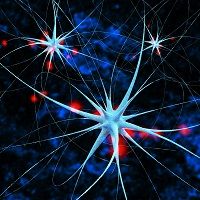Article
Neurobiology of Addiction: PET Scans Show Changes in the Brain.
Author(s):
Addiction is a chronic and progressive brain disease of the reward, motivation, and memory pathway that moves from an impulse or positive reinforcement to compulsive and negative reinforcement.

The world tends to look at addicts as people who have a character flaw. Are they poor decision makers? Are they narcissists? Are they anti-social? For the most part, we don’t do that with other people and their diseases.
“Oh, you’re diabetic, you must be narcissistic. You have high blood pressure, you’re a poor decision maker. No, we don’t do that. So we’ve got to really come forward with drug addiction as a disease,” said JeanAnne Johnson Talbert, DHA, APRN-BC, FNP, CARN-AP, medical director of Steps Recovery Center, Payson, UT, at the American Psychiatric Nurses Association 28th Annual Conference, held October 22-25, 2014, in Indianapolis, IN.
In the 5th edition of the Diagnostic and Statistical Manual of Mental Disorders (DSM-5) that was published last year, addiction is classified as a “substance abuse disorder.” According to Talbert, “the newly revised edition took out the ‘legal ramifications’ criteria and substituted ‘craving.’ And that’s where you’re starting to see some progression with treating this disease.”
What’s the big deal? Nearly 23 million Americans are addicted to alcohol or other drugs. Tobacco, alcohol, and illegal drug addiction costs this country $524 billion a year in direct and indirect costs. The economic burden is twice as much as any other disease affecting the brain.
You may know people who can drink a whole bottle of wine in one evening and then not touch it again for months. And you may know people who can drink socially or on the weekends or holidays. People can also abuse substances, but not all of those people are actually addicted. Then there is full addiction, which involves changes to structures of the brain. “A person can fluctuate in and out of occasional or social abuse, but once you get into the actual addiction, you don’t fluctuate. You’re stuck,” said Talbert.
No one starts out wanting to become an addict, she added. “You may just want to feel good or better, but the younger you are when you start using, the more likely it is that you’ll become addicted,” said Talbert.
Addiction is a chronic and progressive brain disease of the reward, motivation, and memory pathway that moves from an impulse or positive reinforcement to compulsive and negative reinforcement. Brain structure and function change.
Addiction can also affect clinicians. “What really happens in the brain to cause an addicted doctor to lose control and his license to practice medicine? Addiction hijacks your brain and makes you do things that you normally wouldn’t do,”” said Talbert. The thing that’s really important with addiction is this term ‘plasticity,’ which means that the brain actually changes in response to experiences. This involves both excitatory and inhibitory influences,” she said.
Positron emission tomography (PET) scans and other research over the past 20 years have increased our understanding of the neurologic processes that underlie addiction. Addiction affects the brain circuits involved in reward, motivation, memory, and even inhibitory control.
Talbert said drugs release dopamine‑‑the same chemical you feel after good sex, food, and relationships‑‑in the nucleus accumbens. “You want more. But over time in an addict’s brain, the same drug of choice no longer has that appeal. Then compulsion rears its ugly head and cravings control the addict, sometimes even after years of abstinence,” she said.





